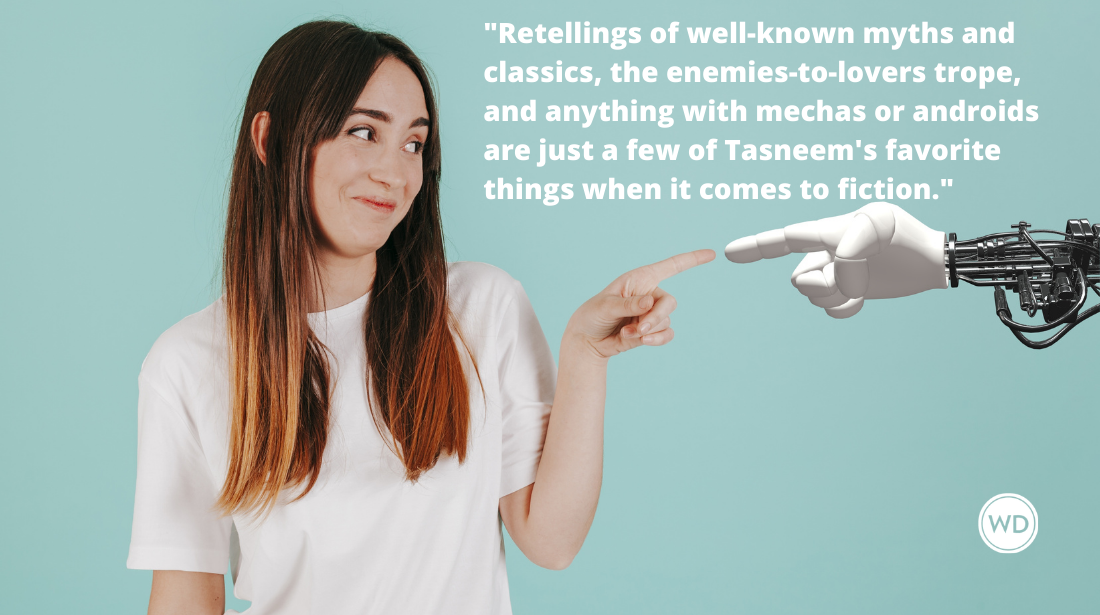Make Your Living Writing B2B Content
Everywhere you look, someone is talking about the growth of online content, and how it’s such a huge opportunity for writers …
Editor’s Note: The following content is provided to Writer’s Digest by a writing community partner. This content is sponsored by American Writers & Artists Inc. www.awaionline.com.
Everywhere you look, someone is talking about the growth of online content, and how it’s such a huge opportunity for writers …
And then there’s the B2B market (Business-to-Business) … with over 5 million potential writing clients in the U.S. and Canada alone!
But it’s the cross-section of these two opportunities that has recently gotten my attention …
Gordon Graham — copywriter to big names like Google, Oracle, and Adobe — describes this cross-section as a vast “Blue Ocean” of opportunity — a place where there’s little competition and smooth sailing when it comes to getting clients.
Sounds like a hidden oasis … but it’s not. As I said, it’s a market with 5 million potential clients available — including major household names that are dying to find new writers to work with!
In fact, Gordon says his biggest problem working in this market is perpetually “too much work.”
It’s a problem he’s struggled with for decades …
I know, some people just have it so tough!! :-)
For the last 35 years, he’s made a great living (and earned tons of awards) by working exclusively in the area of B2B content marketing.
His clients are businesses selling their services and products to other businesses. And in order to win new customers, they need to build strong, trust-based relationships with their prospects.
The easiest way for them to do that? Publish tons of useful, interesting content!
And today, he’s going to share with you how you too can make a living as a writer, just by writing B2B content … Over to Gordon …
***
I can remember the exact moment when I decided to be a writer.
I was in Grade 3. Our teacher had this wonderful habit of putting up colorful pictures of people, places, and animals around the classroom. She said that after we finished our regular work, we could choose any picture and write a story about it; then she would read the best stories out loud to the whole class.
I used to rush through my work, so I could pick a picture and scribble down a story on it. My teacher would regularly read out my stories.
I remember clearly one day, the whole class was sitting on the floor while she read. When my story hit a surprise, all the other kids went, “Ooooooo … ” and “Aaaaahh … ” When my story was funny, all the kids laughed.
As I sat marveling at these reactions, I suddenly realized, “This is what I want to do with my whole life: I want to write stories!”
But I didn’t stop there. I wanted to turn pro. At the ripe old age of 8, I decided to make my living as a writer.
And so I did. For the past 35 years, from just after I got out of university, I’ve earned a good middle-class income as a professional writer.
The explosive demand for nonfiction content writers
Through all that time, I’ve never seen anything like today’s explosive demand for nonfiction writers to create Business-to-Business (B2B) content.
B2B content includes everything from blog posts to white papers, plus presentations, press releases, websites, even scripts for online videos.
Companies need good content to help them rise in the Google search results … to stand out from the competition … and to attract prospects who trust them enough to buy.
There’s such a desperate shortage of skilled B2B content writers that any seasoned nonfiction writer such as yourself can pick your own clients, work your own hours, and earn far more, far faster, and far easier than by writing magazine articles or books.
In fact, the opportunities in B2B content are so vast that you can write in the format you enjoy most, and still make a good living. Even novelists and poets who are willing to write about the real world can prosper in this.
Long or short?
For instance, some writers like to write short, while some like to write long. In B2B content, you can do either:
- A short project could be a 500- or 600-word blog post, for which you can charge $250 to $500.
- A long project could be a 5,000-word white paper, for which you can charge up to $7,500.
People or things?
Some writers like to focus on people, and some on things. In B2B content, you can do either:
- A project about people could be a case study, which is an extended testimonial that reads like a human-interest story with many quotes. For an 800-word case study, you can charge $1,000 to $1,500.
- A project about things could be a web page that describes the features and benefits of a product or service. That could be part of a website project that earns you thousands of dollars.
Deep research or lively opinions?
Some writers like to do lots of research, far more than they can ever pack into a story. Others like to toss out provocative opinions to get a reaction.
In B2B content, you can do either:
- A deep-research project could be a white paper that cites 40 sources to build an argument. For that kind of white paper, you can charge $1 to $2 a word.
- An opinion piece could be a blog post done as a thought-provoking take on a timely issue. For a 500-word blog post, you can charge up to $1 a word.
Text or visuals?
Some writers like to stick to text, while others enjoy working with visuals. In B2B content, you can do either:
- A text-only project could be a plain-text newsletter emailed to a company’s list of prospects. Many e-newsletters are created by writers with annual contracts worth thousands of dollars.
- A visual project could be a slide deck (like PowerPoint) with just a few words per slide plus a graphic. You can charge $100 and up per slide. Or it could be the script for a 3-minute video, for which you can charge $1,000 to $2,000.
Fiction or nonfiction?
Even if you’re a fiction writer, you can use the techniques of good fiction to create lively and effective B2B content.
You can create word pictures that show, not tell. You can use original phrasing, not bland clichés. You can boil down dialog to its strongest words and sentiments. You can write in a simple, conversational style. You can leave out the boring parts.
And if you’re already a seasoned nonfiction writer, you’ll feel right at home interviewing sources, describing how things work, and weaving quotes and statistics into your pieces.
Find out more about writing B2B content today …
So whether you’re a novelist looking for a more lucrative way to use your skill with words … or a seasoned nonfiction writer looking for better pay than you get from magazines …
I urge you to find out more about writing B2B content.
Worried that you don't know a case study from a white paper? Not sure what to charge for writing an executive speech?
To give you the answers and help you get started quickly, I recently put together a “Crash Course” on the 12 most popular types of B2B content for AWAI.
It covers blog posts, case studies, e-books, e-newsletters, infographics, placed articles, press releases, slide decks, speeches, video scripts, websites, and white papers.
These are all the most common projects that B2B companies are desperately looking for, right now.
The “Crash Course” describes what goes into each kind of writing project … how much time it will likely take … what you should bill your clients … how to turn that first project into a stream of repeat business ... and how to earn easy money by repurposing the same content in another format.
If you truly want to earn your living as a writer, I encourage you to get a copy of the “Crash Course” right away … and start cashing in on the biggest opportunity for writers that’s come along in a long, long time.
***
Thanks, Gordon!
Next week, we’ll take a look at another growing opportunity for writers that offers a ton of variety, and I’ll give you some specific advice on how to land the assignments.
To your success,
Rebecca Matter
P.S. Want to talk more about the opportunities available for content writers? Reach out and connect with me on Facebook, or find me any time through my website at rebeccamatter.com.






